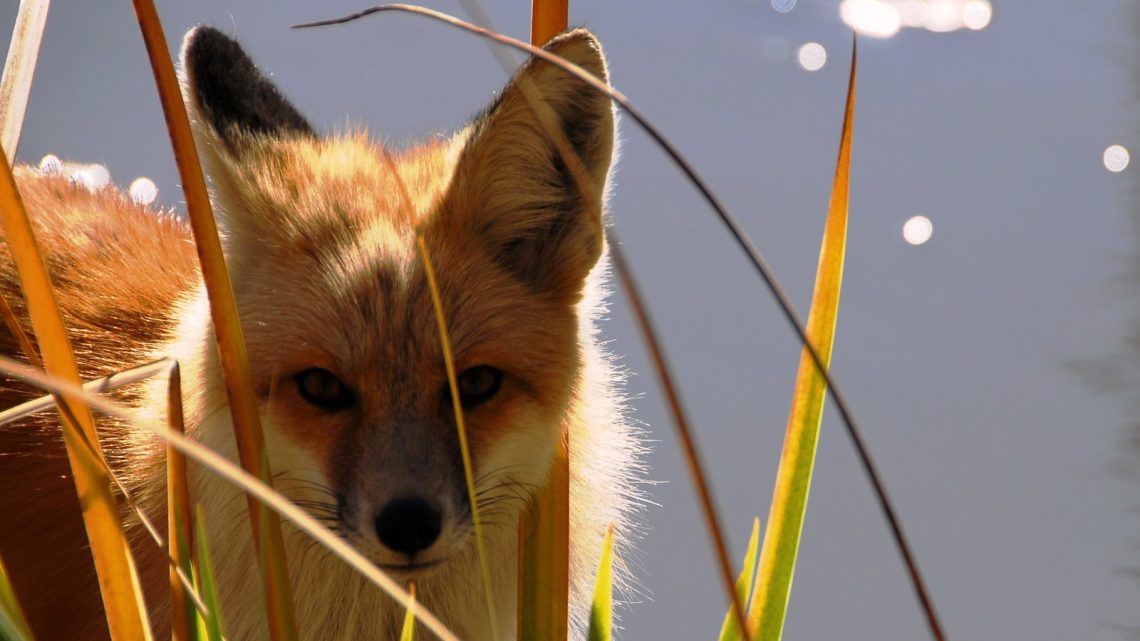
The nature of the fox and its content at home
Recently, people began to get foxes as pets and keep them at home. Unfortunately, these animals are doomed to extinction, as they are sterilized before being sold, therefore they are not able to continue their race.
They began to accustom foxes to a domestic lifestyle back in 1959, when a Soviet scientist began to conduct experiments on the domestication of these animals. Scientist Dmitry Belyaev worked at the Novosibirsk Institute of Cytology and Genetics when he conducted this experiment on foxes of a special color – silver-black. He tried to breed obedient individuals who could coexist peacefully and calmly with a person. So experiments were carried out until a breed appeared that was most adapted to life next to a person.

At the time when these experiments were being carried out, this became known to everyone from television, since many programs were filmed about it, and this topic was discussed on the radio many times. As a result of these experiments, not only an obedient fox appeared, but also completely different in color and appearance from wild foxes. The muzzles of such individuals have acquired a more rounded shape, the color can be different, from pure white to dark red, there are blue, red with a white tummy, brown with black socks. The eyes also changed color to blue, there are individuals with white spots on the fur.
The ears have also undergone a change, they are now drooping, and the tail is slightly twisted up. Foxes belong to canines, but in character they are very different from them, although they have an external resemblance. The bones of foxes are much thinner than those of dogs, which gives them certain privileges.
As mentioned above, the color of chanterelles is quite different, can be found with white collars, gray spots, and dark brown paws. Those chanterelles that are most like dogs have pointed noses and interesting fur.

The “new” chanterelles have slender and high legs, the coat is shiny, thick and long. Like all animals with fur coats, foxes molt twice a year – in spring and autumn. Sheds heavily in the spring. If you keep a fox at home, you need to carefully look after it, and comb out excess hair daily with a thick brush. Also, do not forget that they need to be walked, they need fresh air. If you keep animals in an aviary, then you can comb out at intervals of two to three days, this will be enough.
Like other, more familiar pets, foxes love warmth and care, so they should be treated with warmth and love. Foxes are devoted animals, if they see that they are treated appropriately, then in return they will respond in the same way. You can’t beat or yell at the animals if they did something wrong, you can just shame them a little.
As for the nature of foxes, it is safe to say that these are animals with their own individuality. They have playfulness, gullibility, good memory, affection for the owner. Never offend a fox – if she is offended, then this is forever. The fox will always remember that you made her uncomfortable or hurt, and making contact will be almost impossible. She will not take revenge on you, but will withdraw into herself. People who have been able to build a spiritual relationship with animals refute the myth about the instincts of animals.

Such people know how to carefully observe the animals, and they are well aware that animals feel people and their thoughts very much, and easily guess our emotions. Also, people with increased sensory sensitivity can get along well with animals and feel what they cannot say in words. Often this is seen in life, you just thought that you need to walk the dog, and she is already waiting for you at the door. One cat, named Düsseldorf, liked to go away for a few days to his kitty, and before leaving, he looked at his mistress in such a way that she could literally read the words “I’ll be back.”
Animals understand us better than we understand them. When people castrate or spay animals, they think they are doing the right thing because it seems normal and acceptable. But we hardly ever really think about how the animal feels. It never forgets what was done to it, and is perfectly aware of everything, and it is clear from its eyes that this is a bitter insult that cannot be forgiven or forgotten. It is unlikely that a fox that has been spayed can be one hundred percent the same, open and cheerful. The fact that a fox should live alone and without a couple is a myth, they get along well with other animals.
Chanterelles do not tolerate loneliness. Living under the same roof, they perfectly find a common language with other animals, if any, in the house. Despite the fact that the fox is by nature a predatory animal, it can live with a puppy or kitten in the same way as a cat with a beloved rat or parrot. There are cases when dogs and cats took care of little foxes and fed them with their milk next to their babies.
It is very easy to train a fox to a leash. A regular dog collar is suitable for a Siberian fox, and it is better for a Feneka to buy a leash for walking cats. This interesting breed also needs to be closely monitored, as they can be lost sight of or let go of the leash – these chanterelles are quite agile and mobile.
Fenech is a fox that lives in North Africa, in the Sahara. It is distinguished by large beautiful ears that help maintain the right body temperature in hot desert conditions. The length of the ears reach about twenty centimeters. By itself, this animal is small, the smallest of the fox representatives. It weighs no more than one and a half kilograms. Fenech is listed in the Red Book, so they cannot be exported and sold. In Russia, there are already places where they are bred specifically for sale.
Under natural natural conditions, the fennec fox stays awake at night, mainly hunting small insects, lizards, and also eats fruits. By nature – very smart and agile, able to dig a hole very quickly to find his “lunch”, or to wait out the heat of the day in this mink.
The color of the fennec fox is golden-beige, light. Wool also grows on the pads of the paws, it protects the delicate skin of the animal from hot sand in the sun. This breed is especially distinguished by the fact that throughout life, it lives with its family, usually in large flocks. If you decide to have a fennec fox at home, try to surround it with other animals, or at least lots of toys. Since these animals are very mobile and love to jump, they, accordingly, need quite a lot of space, a lot of minks from boxes and pillows. Be sure to make a tray-toilet with filler, and a house with a bed.
You can let the fennec fox out under supervision, before that you should remove sharp and fragile objects away. It is good to feed chanterelles with high-quality food for dogs and cats, as well as natural products – meat, fish, boiled eggs, you can add porridge and boiled vegetables. Raw chicken and beef can be given, but not much. The water must always be fresh. If you bought a fox cub from a farm, ask what they were fed there and introduce this food into their daily diet.
If you decide to buy a fox, you will not regret it, these are very interesting animals, but be sure to take care of the necessary care for it and the appropriate conditions. All animals need space and fresh air, as well as a cheerful company in which they will feel comfortable and good. You can not leave the animals alone, otherwise they will die.





